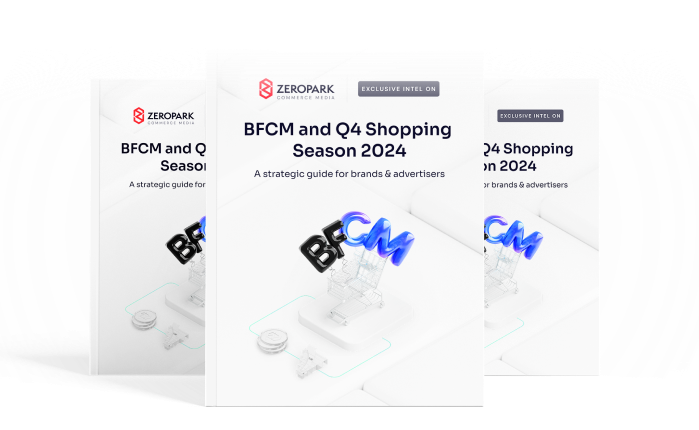Mobile advertising has been around for well over a decade now. With the mobile market rapidly changing we went from a heavy, brick-sized device for calling to a small, sleek plate nearly as powerful as a computer. And yes, it’s now got ads.
While not everyone might appreciate the number of ads appearing on mobile phones nowadays, it certainly is a lucrative niche for affiliate marketers. Mobile advertising has many forms and if you want to do it well, you need to know your way around.
So, if you’re planning to hop on the trend of mobile marketing, read this complete guide to mobile advertising in 2022 and enjoy the free tips.
How mobile digital marketing is changing?
Advertising has changed significantly over the years. From banners and magazines to television, to the Internet, and finally to mobile devices. Now, when we look at the breakdown of the most popular advertising platforms from 2020, mobile marketing is at the forefront.
The mobile advertising market has just gone through an intense phase of development and while it’s becoming increasingly saturated, it is currently one of the best platforms to target. Mobile usage keeps increasing and people are starting to use their mobile devices for literally everything. Shopping, studying, working, playing games, editing photos, researching gifts and purchases, even making doctor appointments are now tasks commonly done by smartphones.
Business owners can no longer ignore the mobile audience, and as a consequence, building brand awareness and scouting for potential customers always include mobile advertising.
Mobile advertising during (and after) Covid-19
Apart from the ongoing shift from desktop to mobile as the leading marketing medium, in 2020 we observed changes caused by the pandemic. Even though desktop usage has increased as people all over the world were sent to work semi-permanently from a home office, the e-commerce market has yet again observed an increase in mobile activity.
Mobile ads are continuously evolving as well. While the Covid-19 pandemic might have stalled the global mobile takeover, it didn’t change the fact that the growth is unstoppable. As reported by eMarketer.com, the landscape of mobile advertising will continue to change and grow exponentially over the next couple of years.

It’s worth noting that the changes in the mobile advertising market involve the appearance of more creative and intricate advertising methods. Apart from some of the affiliate marketing classics like pop, and domain redirect traffic, mobile marketing involves showing interactive and video ads within apps easily downloadable from the app store. Additionally, display ads and banner ads have also increased their presence.
Mobile traffic vs. Mobile offers
Although by mobile advertising we usually refer to all kinds of advertising activities that are bound by a mobile phone or a tablet device, there is a lot more to it than meets the eye. In general, we can distinguish between mobile traffic and mobile offers.
Mobile traffic refers to the kind of traffic generated by mobile devices. It’s traffic coming in from mobile browsers, in-game mobile ads, ads coming from the device itself, or any app installed on it. Mobile traffic can be split into smaller fractions such as carriers, OSes, and OS versions. Thanks to that many traffic sources offer their affiliate marketers very precise means of targeting.
Mobile offers, on the other hand, are offers that are meant to be advertised on mobile devices only. The reason for this is that their flows require actions that can be performed on mobile devices, for example, sending or receiving an SMS message or making a call. They also use the mechanism of automatic carrier billing so while some offers are not suitable for desktop traffic others are entirely incompatible.
While it’s important to grasp the differences between mobile offers and traffic, the lack of that knowledge shouldn’t ruin your affiliate marketing strategy. These terms are sometimes overlapping. And if you go to pick an offer from any affiliate network, the offer will be described as being either mobile and desktop-friendly or exclusive to one of the platforms.
However, if you somehow manage to mistakenly launch a campaign with a mobile offer on desktop traffic you will most likely be stopped by the traffic source/affiliate network support team. Alternatively, in the worst-case scenario, you’ll lose money as you’ll either score no conversions or won’t be paid for conversions coming from the wrong platform.
What are the benefits of mobile marketing?
Did you know that Google has changed its algorithm to prioritize mobile-optimized pages in mobile search queries? That was in 2015, actually. So, if Google has already changed its way to be more accommodating to users with a preference for mobile devices, it’s high time you do the same.
The main benefit of mobile marketing is that, at this point in time, people are using their mobile devices for everything. All the time. For shopping, studying, working, and relaxing. Take social media, for example. According to Statista.com:
In January 2022, over 98 percent of active user accounts worldwide accessed the social network via any kind of mobile phone.
While Facebook ads are a completely different thing, you can’t deny that with such a high percentage of mobile usage, digital advertising for mobile is not to be ignored. After all, if you want to sell your products and score conversions, you need a big target audience, and skipping mobile in 2022 would be a massive mistake.
Need more convincing? The list of mobile marketing benefits is long.
✔︎ Mobile users take their phones with them everywhere so it’s easy to reach them;
✔︎ While desktop computers are used after work and often with a purpose, people reach for mobile devices often during breaks to pass time which, in turn, generates higher user engagement;
✔︎ Mobile advertising audience exceeded the desktop audience already in 2016 and it only keeps growing;
✔︎ Mobile ads reach users everywhere and are easier to act on which leads people to make more urgent (or whimsical) purchases on mobile devices;
✔︎ Adblocking solutions are less popular on mobile devices than on desktops;
✔︎ Data that’s available for phones and tablets makes for a more exact targeting – for example, targeting options include detecting device language;
✔︎ Varied options for ad formats, from the regular pop, and domain redirect traffic to display ads, banners, interstitial ads, search ads, video, or even interactive in-game ads;
✔︎ Carrier billing offers make it easier for users to make spontaneous purchases as they’re only billed in their monthly phone bill payments and spending money in the future always hurts less than spending it right now;
✔︎ Well-picked mobile offers capitalize on customer intents by showing them exactly what they need when they need it e.g. dating apps or mobile games appearing while users browse the net in search of entertainment;
✔︎ The majority of education and entertainment offers yield a higher click-through rate than the same offers on desktops.
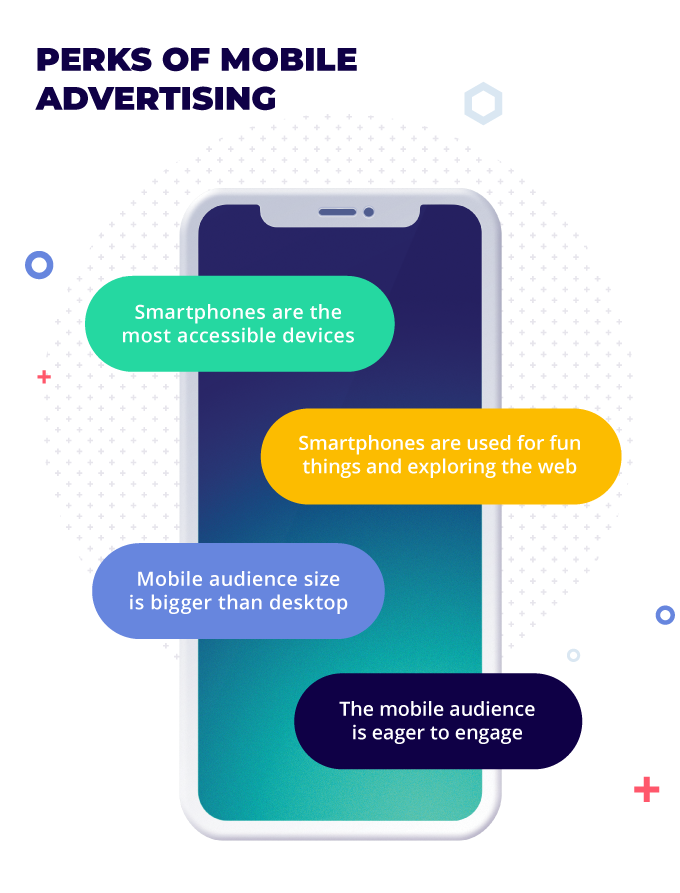
Types of mobile advertising conversion flow
To know everything there is to know about mobile marketing, you need to understand the conversion flows that are commonly present in mobile marketing. In order for a conversion to be counted, users need to perform certain tasks. These tasks are usually independent of the ad format and ad campaign details and are dictated by the offer itself.
Here are the most common carrier billing conversion flows for mobile campaigns.
What are Carrier Billing offers?
Carrier billing (direct billing) offers make use of the customer’s 3G internet connection to allow them to subscribe to a product or service instantly without inputting any contact or billing information. Instead, the purchase is added to the user’s phone bill. Most mobile content offers and mobile marketing makes use of carrier billing. Such offers can have different conversion flows (as described below) and can belong to any vertical.
SOI/DOI
Single Opt-In and Double Opt-in are not mobile exclusive conversion flows. In fact, they are a superior category that can be used to describe most affiliate marketing offers.
Single opt-in is characterized by a simple conversion flow. The user only needs to enter some data that’s specified by the offer and the conversion is immediately counted. If the purpose of the offer is to gather subscribers for a product or service, then such a simple requirement makes the offer’s conversion rate go through the roof.
Double opt-in, on the other hand, requires interested parties to confirm their interest in whatever was advertised in the ad. That means that after entering their details, be it an email address or a phone number, they need to make a confirmation. Quite often such a confirmation e.g. through sending an SMS costs money and therefore scores a conversion.
IVR
Interactive Voice Response (IVR) offers are sometimes called Click2Call. As the name suggests, in order for the conversion to take place, a customer needs to make a call. Such offers have varied payouts which are normally based on how long the user will stay on the phone. Some offers (and businesses behind them) have marketing teams on the other side of the phone call, while in other cases there is only an interactive recording available.
MO Flow
Mobile Originated (MO) Flow offers require a user to send an SMS to a certain phone number to subscribe or access a product or service. Such offers are often called Click2SMS and are described as SMS Billing rather than carrier billing. Additionally, they are frequently run on desktops as well.
PIN Submit
PIN Submit offers, otherwise called Mobile Terminated (MT) offers, generate conversions by asking a user to enter their phone number. Once the phone number has been accepted, that user gets sent a PIN via an SMS message. In order to subscribe or make a purchase, they need to enter the PIN number in a designated place on the offer page.

Types of mobile ads
Although many of the mobile ad formats overlap with those available on desktop, it’s still good to know how they work. Mobile marketing takes on many different forms and there are hundreds of angles you can use to come up with the ultimate affiliate marketing strategy.
Although social media platforms such as Facebook, Instagram, Snapchat, Tumblr, and others are quite potent digital marketing mediums, we will focus solely on ad formats offered by traditional ad exchange platforms.
Pop ads
Pop ads on a mobile device work slightly differently than on a desktop. While desktop browser extensions trigger an ad in the form of a full-screen pop-up (or popunder), on mobile, it’s a new tab that is opened either over or under the currently open one. Pop ads tend to work best for such verticals as adult, binary/trading, and e-commerce.
Redirect ads
Redirect ads are triggered, for example, by inputting a misspelled URL in the search bar. They are slightly on the pricier side, however, are superior in quality. Domain redirects for mobile are most frequently used for PIN submit offers.
Calendar notifications
Calendar notifications are one of the newest ad formats appearing on the market. They work for iOS devices and allow users to receive notifications about ongoing offers if they choose to subscribe to someone’s calendar. As this ad format hasn’t been around for long, such an approach has not been sufficiently tested yet.
Banner ads
Banner ads are one of the mobile marketing strategies used more often for brand awareness ad campaigns. The banner ads can appear over a website or in an app. There are various kinds of banners as they can be positioned in different parts of the site. Although they often get clicked on by accident, banner ads are still considered a profitable marketing strategy.
Interstitial ads
Interstitial ads are full-screen ads that appear in-between content. They are a part of natural user browsing flow which yields high conversion rates. They can appear over websites but also inside apps, for example, in-between game levels.
Video ads
A video ad might be one of the most engaging ad formats out there. They are memorable and can be entertaining when done well. The downside of opting for such an advertising campaign is that you might not be able to do that well without a talented media creator. A video ad also requires proper optimization as it will be most likely viewed on a small device with no sound.
Native in-app ads
Native ads for mobile devices are just as lucrative of an ad format as their counterparts on desktop. They are meant to blend in with the content of the app. Such an approach makes them non-intrusive and friendly to customers. Also, the target audience of native in-app ads is determined by the app which allows for better results if you match the offer well.

Affiliate Networks with the best mobile offers
Mobile offers can be found in many of the most popular affiliate networks. Just as with desktop advertising, picking the right offer is crucial in creating profitable advertising campaigns. The general advice for beginners is always to go for low payout offers with easy conversion flow.
Unless you do have a big budget or solid affiliate marketing experience. Then you can go ahead and pick whatever offer has a high chance of success. How would you know that you might ask? Well by doing your research, of course. Ask your account manager for top recommendations and take a dive into spy tool inventories. These things have a high probability of being right.
Now, here are the affiliate networks that offer solid mobile content offers.
✔︎ Golden Goose
✔︎ Mobidea
✔︎ Monetizer
✔︎ Traffic Company
✔︎ Clickdealer
✔︎ MyLead
✔︎ Lemonads
✔︎ Targeleon
Would you like to run your first mobile content offer with a special payout bonus? That’s very easy. All you need to do is log in or register with Zeropark, make a top-up and visit the Offer Wall. What you’ll find there is a collection of the most popular and reputable networks with all kinds of bonuses for Zeropark clients.

Where to run mobile content offers?
The ultimate guide to mobile advertising wouldn’t be complete without targeting tips. However, when it comes to mobile content offers, they usually are a marketing mix of different verticals, conversion flows, and ad formats. They can belong to different niches and considering how many different types of offers there are, it’s just hard to pinpoint a single working combination.
Before we go on to discuss the best GEOs and verticals, it’s necessary to mention that the United States of America is truly a winner when it comes to advertising on mobile. It’s full of huge target audiences whichever demographic you choose to target. US traffic volumes are substantial and it is an English-speaking GEO which makes it easy to create ads and landers.
![]()
However, targeting the US is often the most overlooked trap when setting up an affiliate marketing business. Pay-per-click advertising can be very expensive at times. The US, despite its huge potential, is not the first GEO you should target as it takes a lot of testing to find a well-performing chunk of traffic.
Starting with the US will lose you money unless you have a big budget, a good strategy, and an overall experience with running high payout offers. Avoid this and other Tier 1 GEOs unless you’re sure you’re ready for them.
So, what are the best GEOs for running mobile content offers? What are the most profitable verticals? Look at the infographic below and find out.
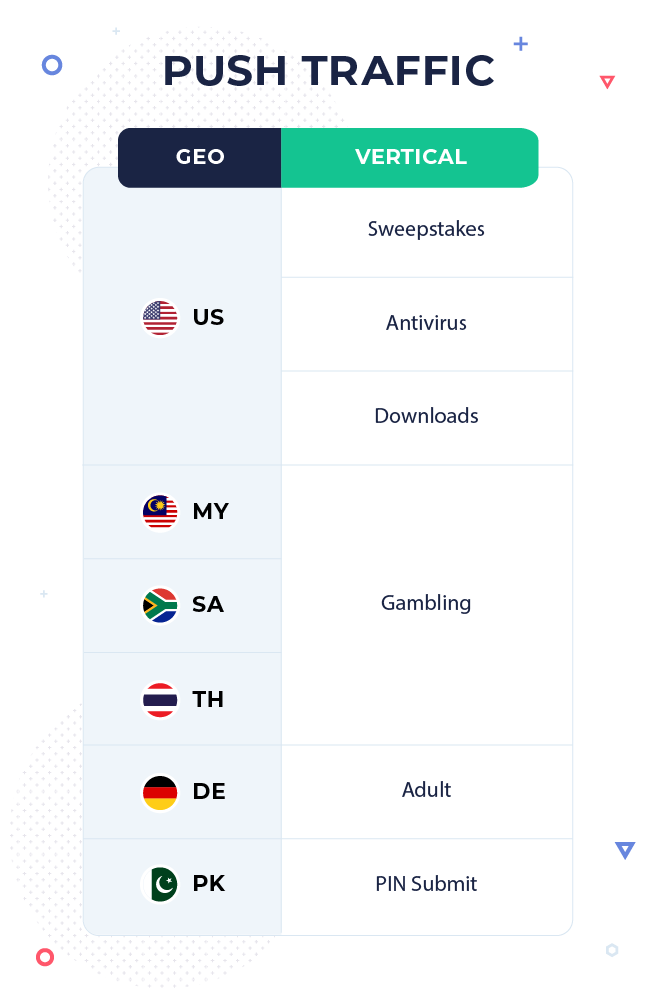
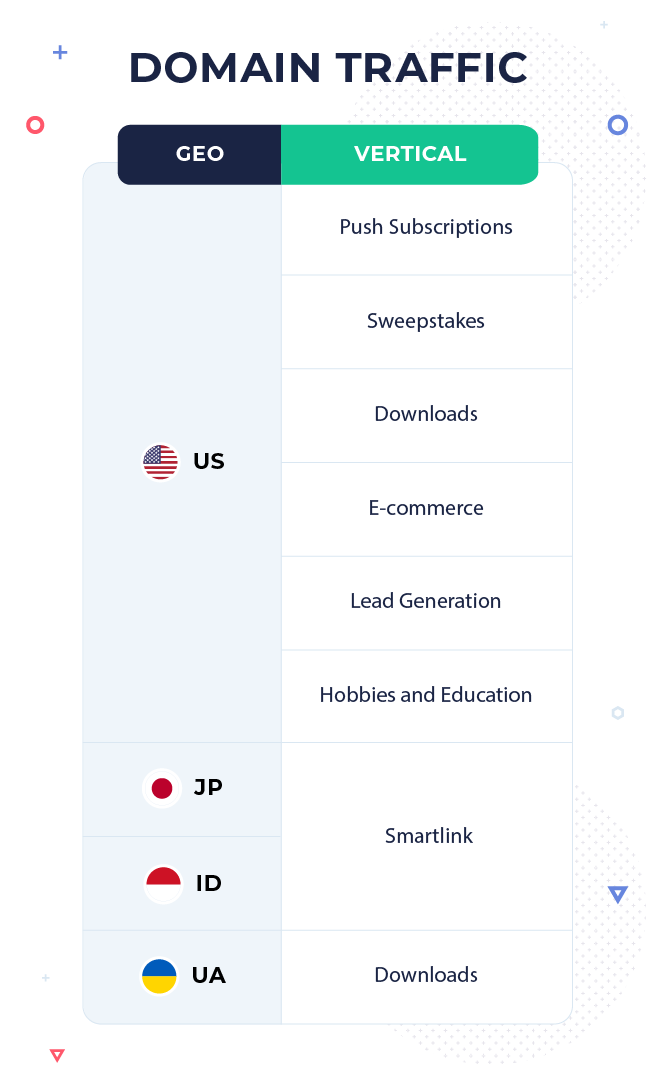
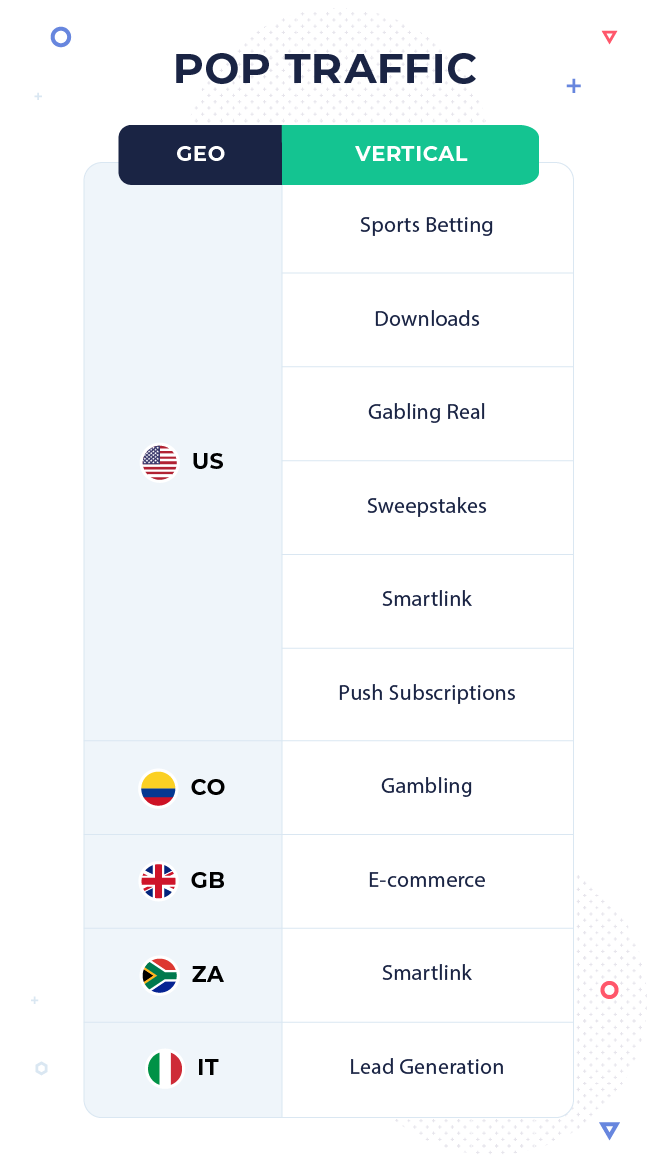
Mobile traffic tips and tricks
No ultimate guide to mobile advertising would be complete without a list of performance-improving tips and tricks. After all, after finding out everything there is to know about mobile advertising, you will have to launch a campaign and optimize
In general, optimizing any digital advertising campaign is similar. You need to gather data, the more the better, and subsequently make choices based on that information. Paid advertising is all about achieving a return on investment. However, it isn’t uncommon that a lot of money will be spent with very poor initial results.
Here are some tips about what you can do to arrive at an optimal mobile marketing strategy without sinking too much money into the business.
Mobile marketing is all about mobile optimization
Mobile page speed is one of the most important aspects of a successful mobile ad campaign. Although the click-through rate is higher on mobile devices, potential customers tend to drop out of the funnel more often than on desktop devices. That is due to the slower average loading speed of mobile pages.
Additionally, your landers need to be optimized for mobile not only when it comes to speed but also a smaller screen. That’s yet another reason why mobile campaigns for tablet devices should be run separately. Tablets are closer to desktop when it comes to screen size and layout so a mobile ad prepared for a smaller screen might look awkward on a tablet.
A landing page can make or break your campaign
People usually need to find out a bit more about a product before they decide to make a purchase. This is a common user behavior to research a product before making a final decision. Hence, a great way to increase your conversion rate is simply by creating an informative landing page with a clearly visible call-to-action button.
While a sweepstakes offer might not need much convincing, a diet pill subscription will require some informative advertising. In general, the more complicated the conversion flow, or the more of a commitment it is to sign up/purchase something, the more effort you need to put in creating the lander.
A/B testing is always the key
One ad you create might turn out to be an instant hit but countless others might go unnoticed. That’s why it’s never wise to only stick with one option. A/B testing your ad copy variants and landers will ensure you are matching the content of your offer with the right audience.
Another thing is that while social media advertising offers you access to data about your potential customers such as age, gender, and sometimes preferences, display advertising requires a bit of guesswork. Or, to be precise – test work. Always make slightly different variants of ads and landers and test them against each other to make sure you find the sweet spot that matches your audience.
The content of the offers matters
All optimization tricks aside, if your offer isn’t interesting, it won’t convert. No matter how well you pick your target audience and how much time you spend perfecting your funnel and creatives… Some offers don’t stand a chance of staying around for long.
Your ad campaign needs to be good, but your offer has to be better. Ask network representatives what works best before launching your campaign. Do your own research on spy tools and community forums. If what you’re planning to advertise is something you could test – do it. Is it an app? Download it and give it a go. You can use gained knowledge to make a compelling landing page.
Seasonality is always in
Paid advertising can be characterized by its seasonality. It revolves around current events, trends, and marketing fads. Just as there’s always something bizarre trending on social media, there often is a particular vertical or offer trending in the world of digital advertising.
While keyword research is one of the best practices for optimizing websites for search engines, it can be a great way of finding out what people are searching for. If you want your ad to be as eye-catching as possible, what’s a better way to do that than by using some of the most searched keywords in the copy?
Make sure to prioritize user experience
It might make sense to use Google Translate instead of professional translation services at the beginning of your affiliate marketing career. It’s cheap and fast and that offer has a $2 payout so why would you spend $15 on a translation anyway, right? Well, this is not exactly how you make money with affiliate marketing.
A potential customer who reads the description of your offer and finds it difficult to comprehend will certainly leave your funnel before purchasing anything. If you keep running the same ad copy, banner blindness will sure kick in and people will stop noticing your ad. If you rip a lander off a spy tool and forget to make the necessary changes, you’ll end up advertising a different app than the one from your offer.
Always double-check your funnel. Make sure users going through it have a good experience. Keep in mind that a smooth, unified funnel with no grammar mistakes and funny formatting is a great example of a professional-looking sales funnel characteristic of reputable businesses.
You sure do wanna be like them, don’t you?

Conclusions
Mobile advertising is an umbrella term for all kinds of mobile marketing activities. You can have mobile Facebook ads, banner ads, video ads, in-app interactive ads, and all the universal PPC and PPV advertising forms available for desktop devices.
After you understand the common conversion flows and what’s so special about mobile marketing, it will be easier for you to come up with innovative solutions to expand your business.
Hopefully, you’ve learned all the basics from this ultimate guide to mobile advertising, and you can go ahead and pick an offer, ad format, and a traffic source… and finally, make some money!
Are you ready to start earning with mobile advertising?
Join Zeropark Now!
Magdalena Bober




